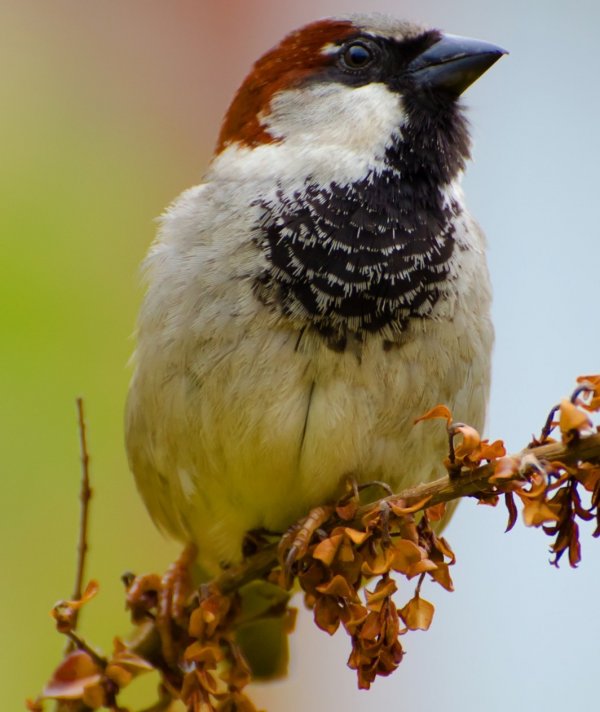House Sparrow
(Passer domesticus)
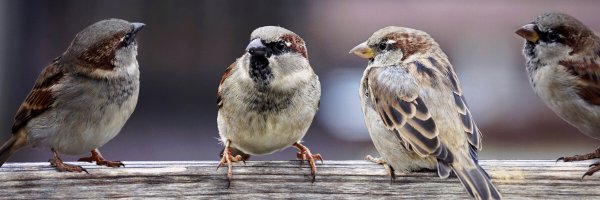
The House Sparrow, sometimes known as the English Sparrow, is a common bird in virtually any urban area in the United States (except Alaska) and southern Canada. House Sparrows are not native to North America, having been introduced from Europe. These birds can be found in almost any backyard, even if you don’t go to any trouble to feed birds. Some people consider them to be pests because they will eat most of the food in a feeder if given the chance, and have been known to drive other birds from potential nest sites. Despite this, the House Sparrow is an amazingly adaptive species, capable of surviving on a wide variety of foods and in areas that don’t seem very hospitable to us.
Size: return to top
- Length: 6.3 inches
- Wingspan: 8.6 inches
- Weight: 1.0 oz.
How To Identify: return to top
All House Sparrows have a stout bill, which is black in males and paler in females. Males, shown below, have a black bib, white cheeks, gray crown, and brownish neck. They do not have any streaking in the breast or belly, and the back and wings are a mixed pattern of brown and black.
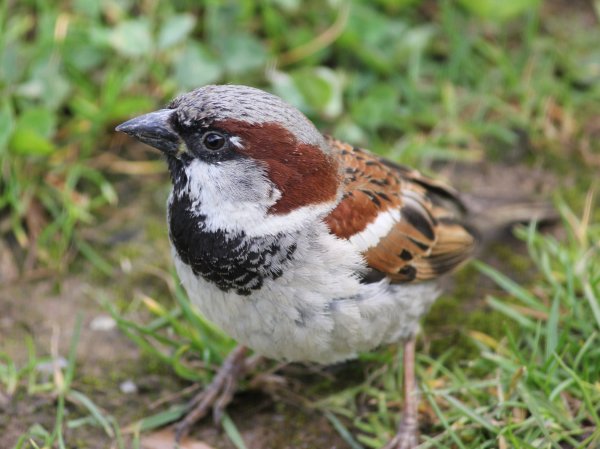 Male
MaleFemales are pale brown overall, paler below, and a bit darker brown above, and with a lighter brown line that starts just above the eye and extends backward to the nape or upper back. The back and wings are patterned with black, brown, and paler brown, somewhat similar to the males, but simpler and paler overall.
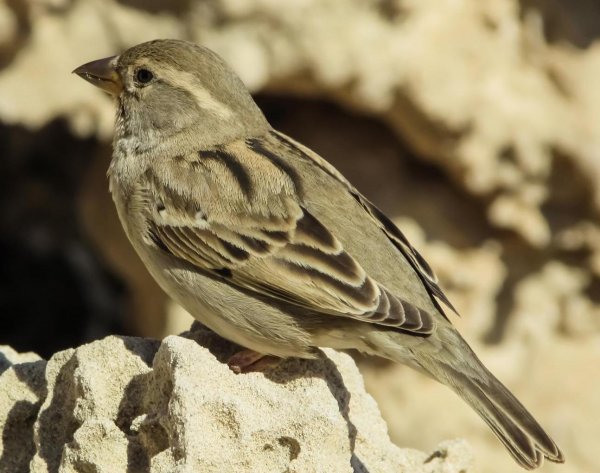 Female
FemaleYoung males resemble females but have black starting to grow in the throat and upper chest area. You can also see some of the rusty brown of the adult male starting to show in the neck region.
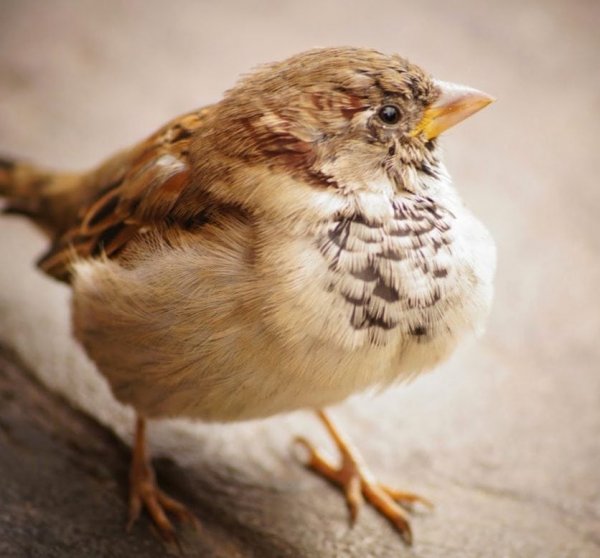 Young male
Young maleRange Map: return to top
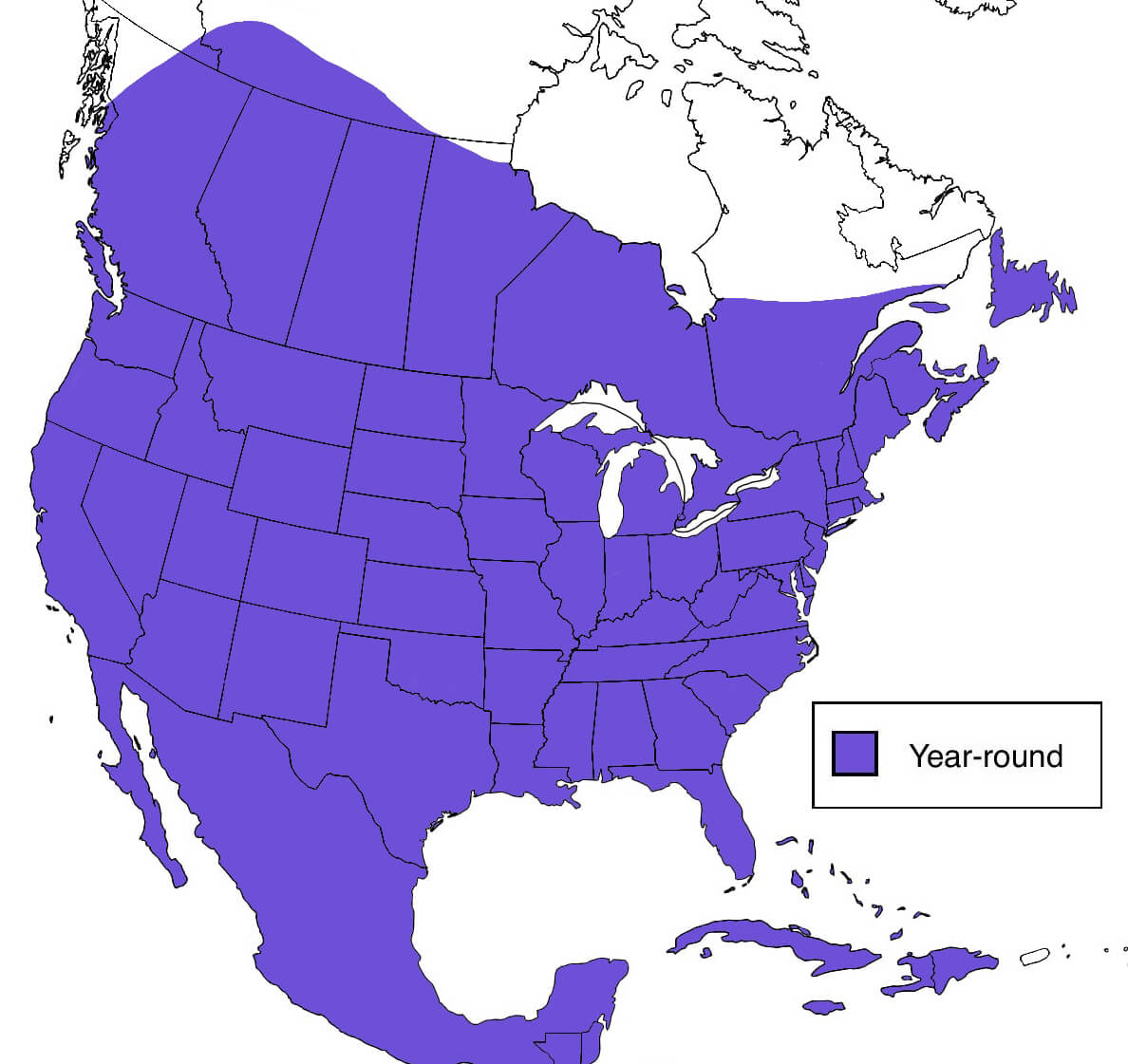
Similar Species: return to top
Eurasian Tree Sparrow – have a pronounced black spot in the middle of the white cheek, and has a solid rufous crown; are only reliably found in the area of St. Louis, MO.
Black-throated Sparrow – have a white mustache and eyebrow, lack the brown behind the eye and back of the head; black bib is much wider than male House Sparrow.
Harris’s Sparrow – black extends onto the forehead and crown, and has a plain buffy side of the face.
House Finch, Purple Finch, and Pine Siskin – females have heavy streaking on their underparts and flanks, which the female House Sparrow lacks.
Habitat: return to top
House Sparrows are found around people. It doesn't matter whether its urban, suburban, or rural (like around livestock operations); if people are there, you can probably expect House Sparrows to be there as well. Where you won't find them is in any large patch of native vegetation, whether its forests, grasslands, deserts, tundra, or shrublands.
Nesting: return to top
- Nest Type: cavity
- Nest Location: nest boxes, holes in buildings and a wide variety of other man-made structures, only occasionally in trees; nests are lined with lots of dried vegetation, to the point of almost completely filling it, and the dead grass and stems sticking out of the opening helps you to locate the nest
- Clutch: 4-6 eggs (range 1-8)
- Incubation Period: 10-14 days
- Nestling Period: 10-17 days
Diet: return to top
House Sparrows rely heavily on seeds and grains, but will eat insects during summer months. They can easily be attracted to backyard feeders with pretty much any commercial seed mix. They also have a preference for cattle and horse feed, which explains why they can be so abundant around livestock operations. Also, you commonly see them at restaurants and fast food joints, eating food that has been dropped or thrown out, particularly in patio-seating areas.
Notes: return to top
The House Sparrow was first introduced in North America in 1851 in New York City. It quickly spread across the continent. It was also introduced in later years in San Francisco.
Males with larger black throat patches tend to be older and more dominant than males with small patches.
You will commonly see House Sparrows dust bathing. They will find a spot of bare ground, and act like they are taking a bath, only with dust. When they are done, you’ll find a small depression where they were bathing. If bare spots are in short supply, they will actually fight over good dust bathing patches.
House Sparrows are known to displace other birds from potential nest cavities. Some of the species that have been impacted through the years are Eastern Bluebirds and Purple Martins.
Despite being ubiquitous in urban areas, House Sparrows are declining in much of North America.
